Get out of Melbourne and see these amazing Victorian places in spring
Spring is a terrific time to be in Melbourne, but as we thaw out from a chilly winter, it’s also the time to see some of Victoria’s country towns and natural sights at their best. Here are 10 great ways to leave the city behind.
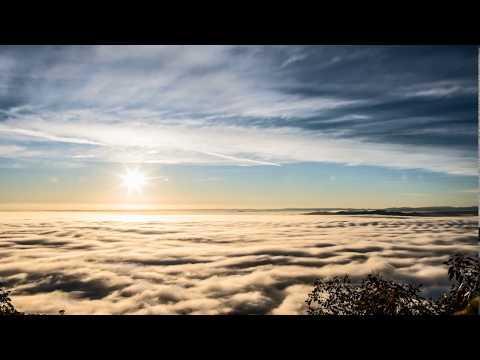
VIC News
Don't miss out on the headlines from VIC News. Followed categories will be added to My News.
Some places are just better in spring.
And these spots around Victoria are at the best during the spring season, where you can feast on delicious produce, wander the wildflowers and even spot whales at play.
HORSHAM: WILDFLOWERS IN THE WEST
Spring is the ideal time to take in all the natural attractions western Victoria has to offer.
Warmer weather makes discovering the Grampians National Park and its many stunning waterfalls and lookouts an absolute delight.
Many of its attractions are accessible by road, and it’s only a short drive from Horsham down to the Grampians’ main centre, Halls Gap.
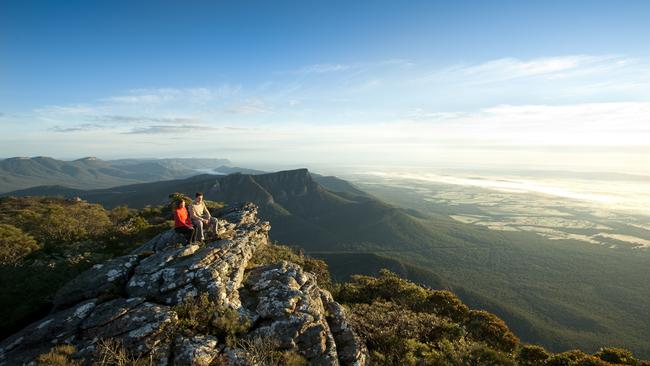
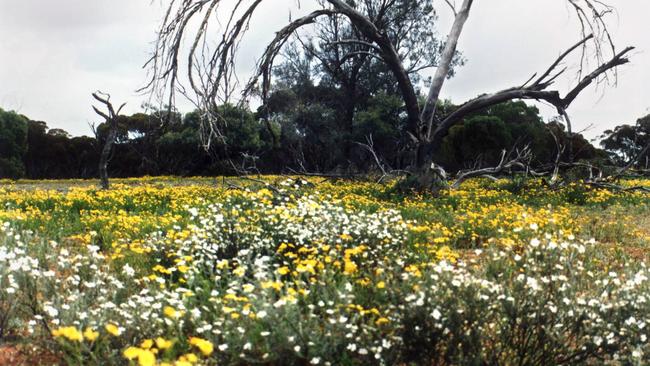
Your best bet is to create a route through the Wimmera and Mallee regions in October, taking in the Grampians, the wildflowers of the Grampians region and the wider Wimmera-Mallee (including the Little Desert National Park and the Big Desert Wilderness Park west and northwest of Horsham, and the Wyperfeld and Murray-Sunset national parks further afield.
Horsham and Mildura are both thriving provincial cities, and towns across that vast area including Dimboola, Nhill, Warracknabeal, Jeparit, Rainbow, Hopetoun and Ouyen have most basic services.
Fun fact: Rainbow was named for the colourful array of wildflowers found on sand lunes in the region when it was first settled.
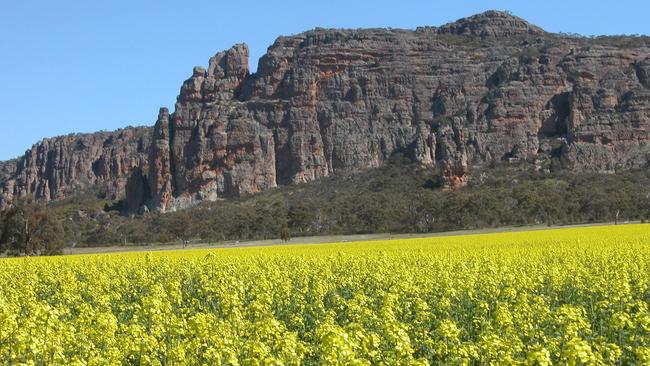
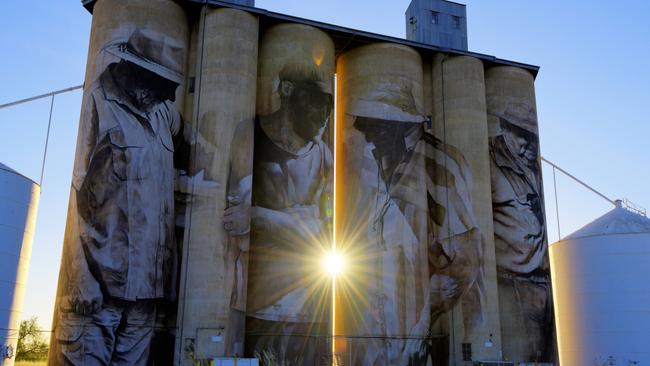
A drive through this part of western Victoria is punctuated with golden canola and wheat fields that are a vibrant green for much of spring.
A visit allows holiday makers to travel the Silo Art Trail from Rupanyup in the south to Patchewollock in the north.
For more adventurous types., a four-wheel drive loop traverses all those national parks and some of the amazing natural and historical features within them including the Pink Lakes near Underbool, a chain of natural salt lakes where a type of algae causes an intense pink hue), abandoned pastoral sites, numerous camping and picnic grounds and miles of sand dunes and mallee scrub to traverse.
WHALES AT WARRNAMBOOL
September is your last chance to get close to whales off the coast in and around Warrnambool.
Whales including the southern right, blue, humpback and orca whales leave the icy waters of the Antarctic in winter and use the warmer waters of the Southern Ocean to breed, birth and raise their calves — and the Shipwreck Coast is the only place in the world where the whales come so close to the shore to do all this.
There are plenty of whale watching spots along the coast from Warrnambool to Portland, but the most famous is at Logans Beach in Warrnambool, where a large viewing platform at the top of the sand dunes gives a great view of the whales swimming and slapping their chins and fins on the water — if you’re lucky enough to visit when the whales are about.
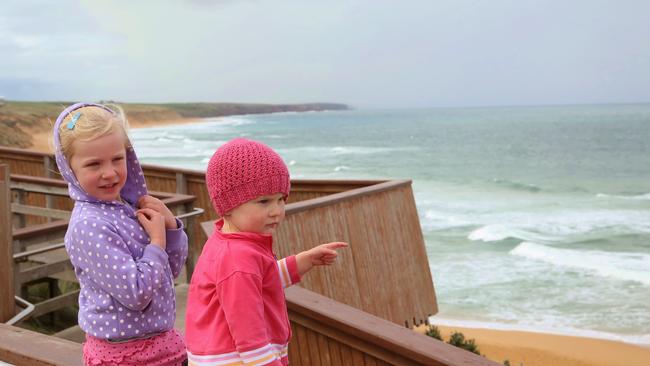
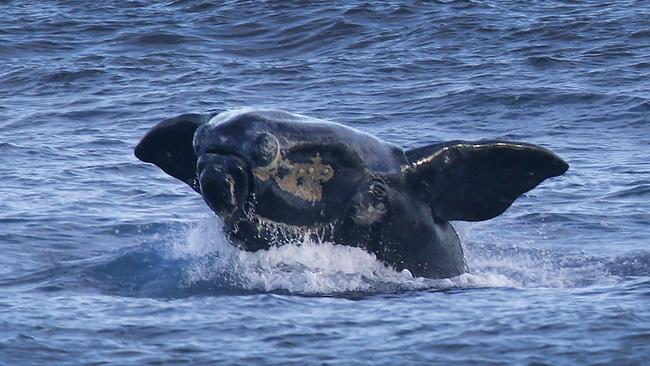
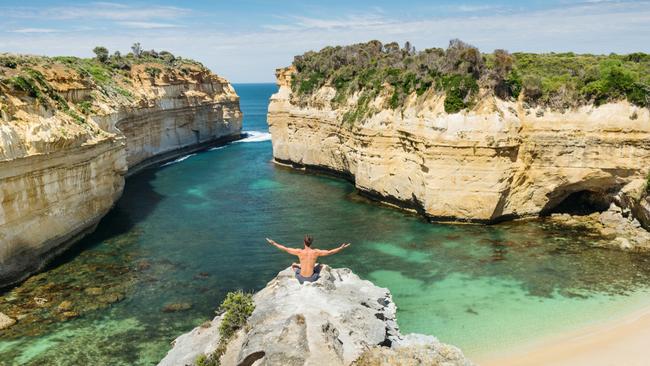
While you’re in Warrnambool, you can visit Great Ocean Rd icons such as the Twelve Apostles and Loch Ard Gorge, visit the Flagstaff Hill Maritime Village and see its night sound and light show, see emus, kangaroos and an incredible array of animals and birds inside the dormant volcano at the Tower Hill Wildlife Reserve.
WALHALLA, LICOLA, BRIGHT FOR HIGH COUNTRY HIKING
As the snow melts away in Victoria’s high country, a new world of tracks for hiking and mountain bike riding opens up.
Our ski resorts, from Lake Mountain all the way up to Mount Hotham and Falls Creek are a great place to start.
There are thousands of hiking tracks across our highest mountains, but the grand-daddy of them all is the Australian Alps Walking Track, which takes walkers from Walhalla in Gippsland right through to Canberra, mainly along the ridges and high plains of the Great Dividing Range.
The whole track is 655km long but there are plenty of shorter sections to explore.
For example, you can start at the historic Gippsland mining town of Walhalla and explore the mountain ash and tree fern country on the climb to Mt Erica and the Baw Baw Plateau, with a series of tracks that can take between one and three days and link with the main track.
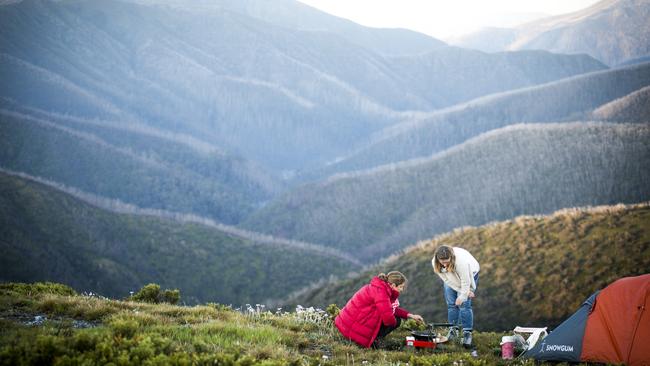
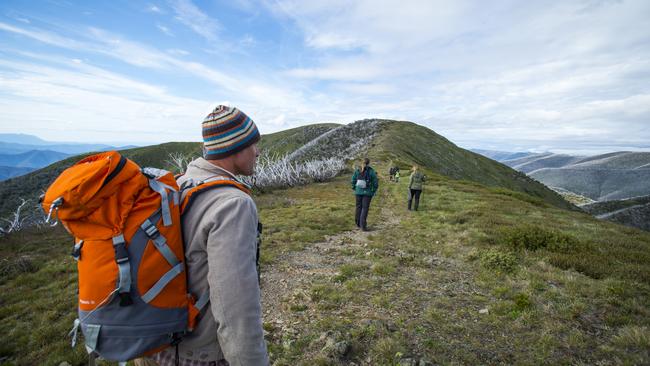
Or, take in the views from Mount Howitt, one of Victoria’s highest peaks, after a 5km climb from Macalister Springs in the Alpine National Park.
Start at the mountain town of Licola and head north up the Howitt Rd to the springs.
Alternatively, use towns including Bright, Mt Beauty or Omeo as your base to explore the Bogong High Plains along the track, or the trails that are connected to it.
SMEATON: TROUT CAPITAL
As Victoria’s waters warm, our fish become more active.
And the award-winning Tuki Trout Farm in Smeaton in the central highlands is a great time to wet a line.
The team at Tuki guarantees that you’ll catch a rainbow trout, and there’s no need for you to own your own fishing gear. Tuki supplies everything.
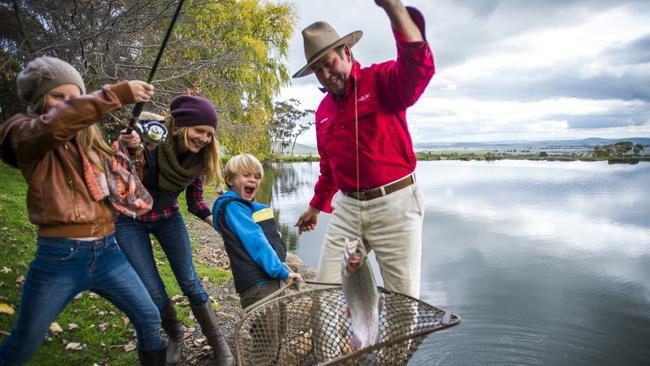
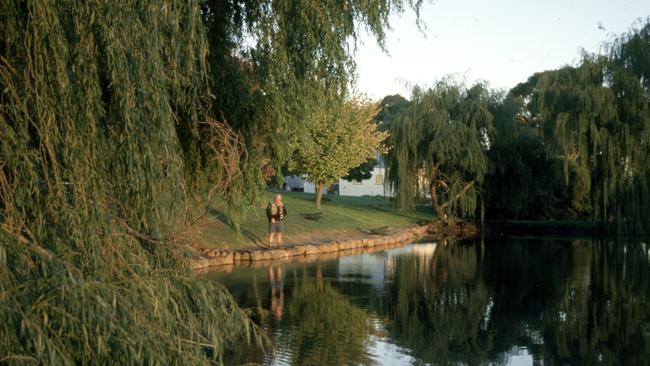
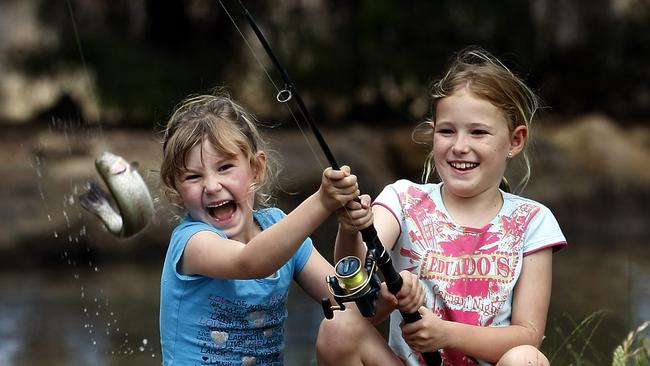
And when you catch a fish, Tuki’s staff will prepare and package it for you so that you can take it home ready to cook, or so that you can have it cooked for you in its restaurant.
Accommodation is available at Tuki if you choose to stay a while — and why wouldn’t you? Smeaton is an easy drive from Ballarat and is minutes from the historic towns of Daylesford, Creswick, Clunes and Talbot.
BARMAH: WATER WORLD COMES ALIVE
As high country snow melts in spring, it swells Victoria’s northern rivers, which all flow to the Murray River.
The Barmah National Park and the neighbouring Murray Valley National Park on the NSW side, are one of the big old river’s most valuable gems — a complex of river red gum forest and wetlands that is a World Heritage-listed habitat for birds and wildlife and has great cultural significance both to the Yorta Yorta people who lived off the land for tens of thousands of years and Europeans who milled its timber and plied the river with paddle-steamers.
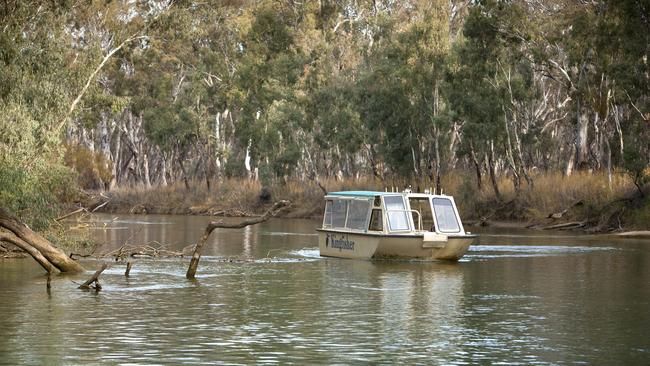
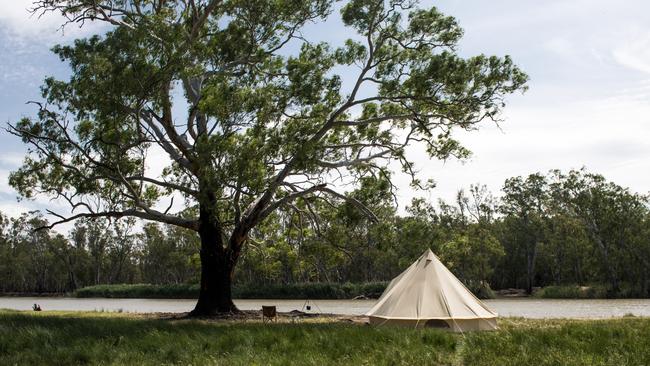
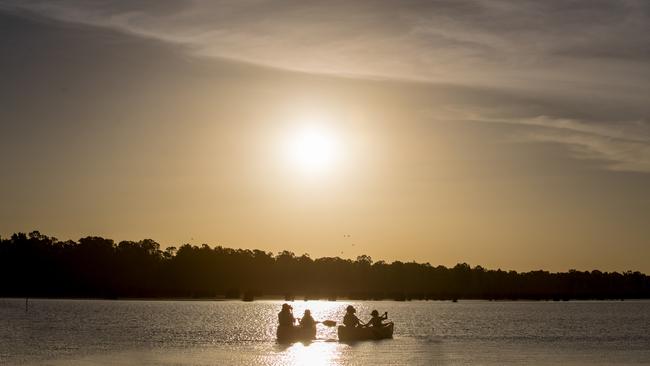
In spring, with the Murray’s flow topped up by the snow melt and seasonal rains, the whole region is a rich breeding ground for birds.
More than 200 species of waterbirds are observed at Barmah, and sightings of kangaroos, emus and koalas are common.
Hiking, biking, boating, canoeing and fishing are all popular activities. You can also take a guided Kingfisher Cruises tour of the wetlands, and bird hides have been constructed across the park.
There are many camping grounds in the area, which is less than half an hour from Echuca, Shepparton and Deniliquin, depending on your destination.
HARCOURT: MOUNTAIN BIKING HEAVEN
You may never have heard of Harcourt, the tiny town northwest of Melbourne that bills itself as the Apple Centre of Victoria.
Spring is a gorgeous time to visit Harcourt, with miles of apple and pear orchards in blossom and the area’s vineyards becoming a see of vibrant green.
But Harcourt has another thing going for it that’s attracting a new kind of tourist — Mount Alexander.
That monumental granite peak is home to a new mecca for mountain biking, the La Larr Ba Gauwa Mountain Bike Park.
La Larr Ba Gauwa boasts 34km of trails for riders at all levels, with commanding views across central Victoria, craggy rock outcrops, a historic oak forest and enough jumps, drops and other obstacles to keep all riders engaged.
Harcourt is an easy 90-minute drive from Melbourne up the Calder Freeway and is minutes from Castlemaine and Bendigo.
Bendigo itself is a cycling town, with pelotons of cyclists traversing the back roads of the district regularly.
A cycling break in Harcourt gives visitors the chance to explore Castlemaine’s gold rush charm, dip into Bendigo’s foodie culture, swing over to the up and coming Heathcote wine region and visit the historic town of Maldon, the first declared by the National Trust as a significant town.
MEANDER IN MILDURA
Beat the summer heat and head to Mildura to explore the Sunraysia region.
Budding grapevines and the blossoms from citrus orchards and almond groves bring fresh colour to the red earth of the semi-arid country in Victoria’s far northwest.
Enjoy dry, sunny weather and relax by a languid bend in the Murray River.
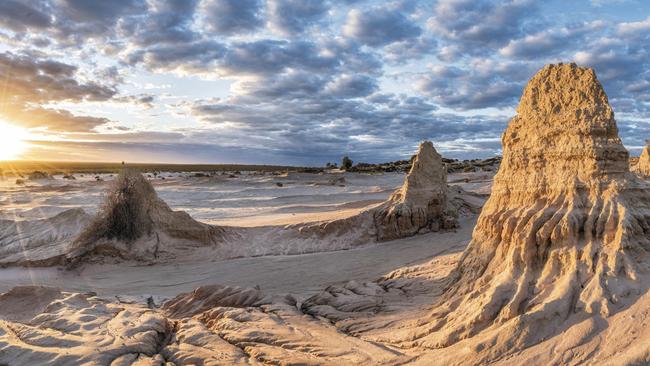
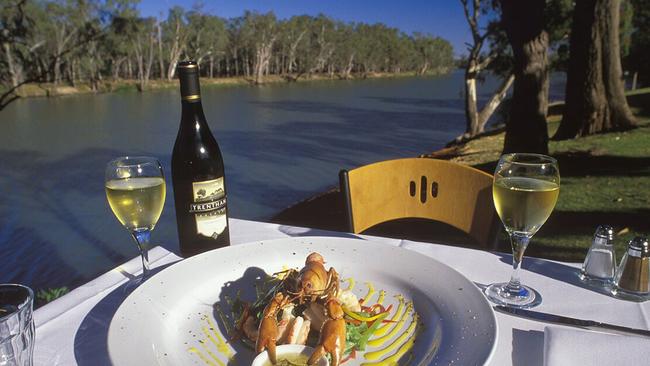
Cross the river into NSW and explore the ancient Perry Sand Hills in Wentworth, or drive about an hour to the Mungo National Park, where the remains of Mungo Lady and Mungo Man were discovered in 1968 and 1974 respectively, proving indigenous people had lived in Australia for at least 40,000 years, and the stunning rock formations known as the Walls of China.
You can fill your car boot with a selection of the region’s fine wines, and explore all the great dining on offer including the cafe and restaurants of celebrity chef and Sunraysia champion Stefano de Pieri.
BUCHAN: GO CAVING
The Buchan Caves, near Bairnsdale, is one of Victoria’s natural gems.
Water seeping through cracks in 380 million-year-old limestone and mudstones, formed at a time when East Gippsland was under the ocean, has created a maze of caves and underground rivers that have been attracting visitors for generations.
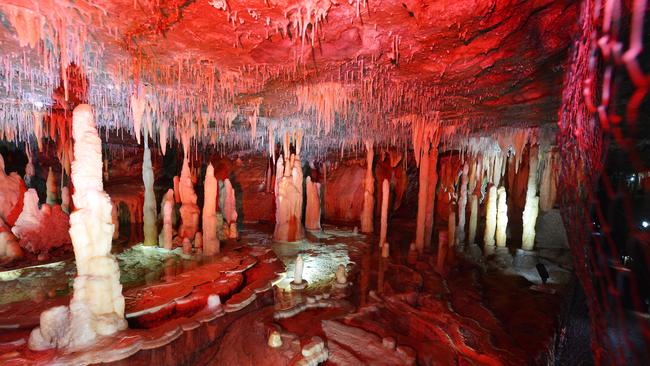
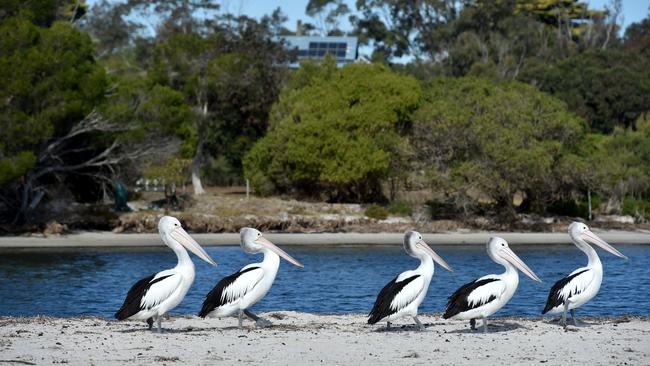
The caves are open every day except Christmas Day, but from the September school holidays, the number of guided tours through the Royal and Fairy caves increases — so spring is a terrific time to visit East Gippsland.
Buchan is within easy reach of Bairnsdale, Lakes Entrance, Metung and Paynesville.
The Gippsland Lakes are a perfect place for boating, waterskiing, fishing and swimming.
MARYSVILLE AND TRENTHAM: WATERFALL WONDERS
Two of Victoria’s most striking waterfalls are also two of the most accessible.
Trentham Falls, near Trentham, is one of Victoria’s highest single drop waterfalls.
There, the Coliban River plunges 32 metres from a basalt shelf.
Steavenson Falls at Marysville is among Victoria’s highest waterfalls, with the Steavenson River descending 84m in five cascades.
Both waterfalls are easily accessible on foot and are a delight for people of all ages and abilities. In fact, Steavenson Falls has wheelchair access to the base of the falls.
It’s also floodlit until 11pm each night — a lovely spot for a night-time stroll and a close encounter with possums.
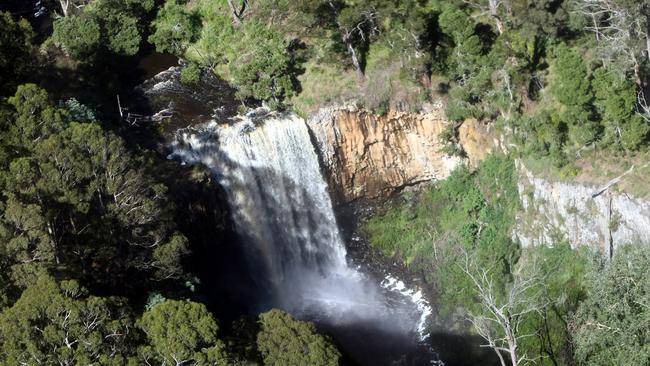
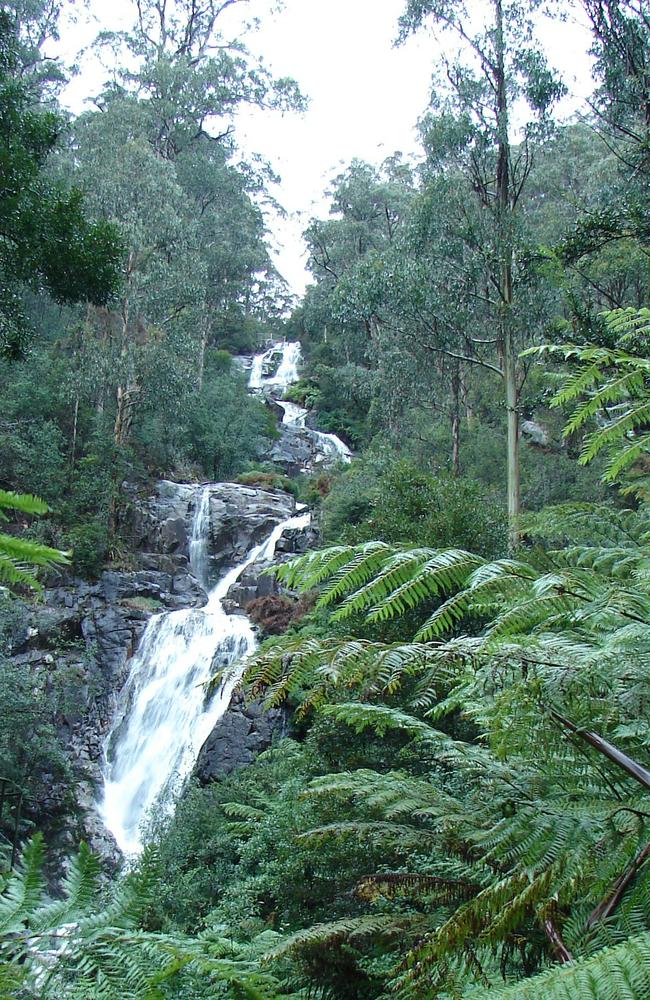
While both are perennial, you’ll find them at their best following winter and spring rains.
Both are also less than 100km from Melbourne.
Trentham, in the heart of the Macedon Ranges and the Daylesford spa country, and Marysville, a beautiful town with the Yarra Ranges National Park, the Cathedral Ranges and towns like Alexandra, Eildon and Alexandra in easy reach, are both ideal places to spend a few days out of the rat race.
Keppel Falls and Phantom Falls are just a few kilometres away on the other side of Marysville, although they are not wheelchair accessible like Steavenson Falls.
DAYLESFORD: LAND OF LAVENDER
Lavandula, one of Victoria’s most beautiful rural properties, lies about 10 minutes north of Daylesford, and it celebrates the Swiss-Italian heritage of many of the residents of the surrounding Hepburn Shire.
It’s also a great way to celebrate the change of the seasons.
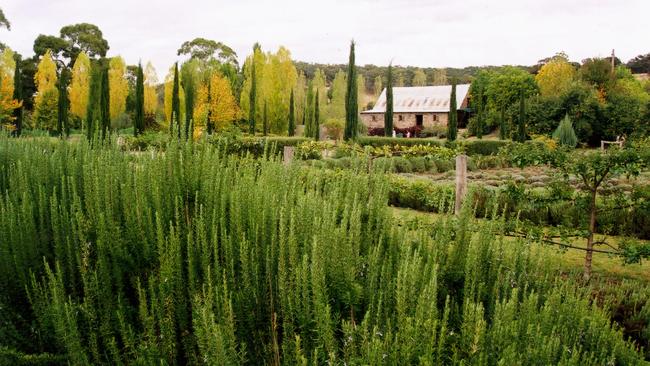
Winter is particularly cold up Daylesford way, on the Great Dividing Range, but Lavandula’s lavender crop, its herb and vegetable garden and the extensive European-style gardens around the main buildings explode in colour in spring.
The herbs and veggies — and the lavender — find their way into the food at Lavandula’s La Trattoria restaurant and cafe.
Lavender is a key ingredient of the lotions and creams made at the farm.
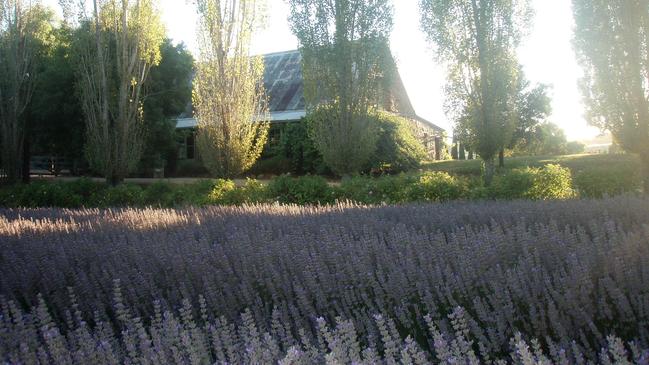
MORE TRAVEL:
VICTORIA’S BEST UNDERGROUND WINE CELLARS
REGIONAL VIC’S FINEST FOOD AND WINE
NATURE GETAWAYS LESS THAN 100KM FROM MELBOURNE
The region is half an hour from Ballarat and Castlemaine and boasts natural mineral springs, a great selection of top eateries including The Lake House and gastropub the Farmers Arms, the Convent Gallery, the Spa Country tourist railway, The Wombat Hill Botanic Gardens and food and produce purveyors including Istra Smallgoods, which manufactures its foodstuffs in nearby Musk and has a factory retail outlet.


